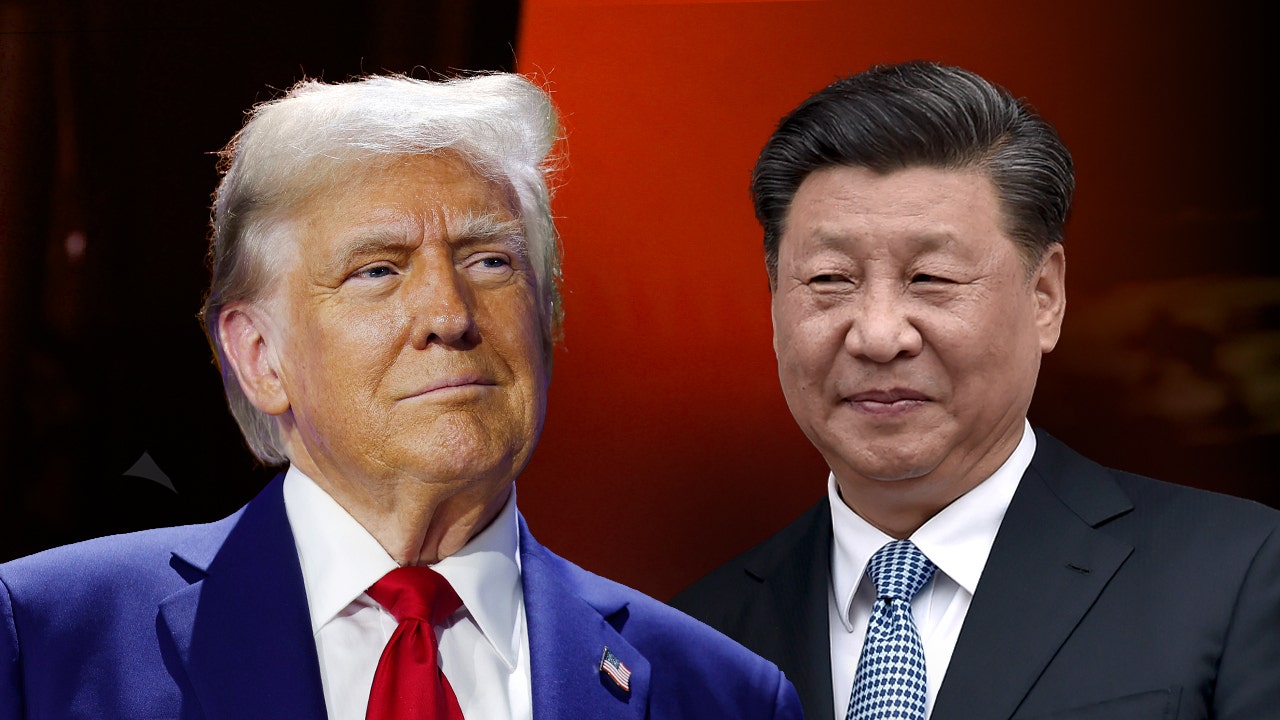Crypto
2024 will be a transformative year for cryptocurrencies

Chris Ratcliffe/Bloomberg
With three of the crypto industry’s top players dropping out of the game and the SEC approving
The cryptocurrency market is, by definition, young and disruptive. It appeared discreetly in 2009 with the emergence of bitcoin and has
At an unstoppable pace of innovation, key figures such as Do Kwon (Terra Luna), Sam Bankman-Fried (FTX) and Changpeng Zhao (Binance) rose to prominence in the industry and, in the case of the latter two, began to impose their own logic on cryptocurrency exchange platforms.
However, within the last two years, all three are gone.
The legal cases of Do Kwon and Bankman-Fried were serious enough to land them in the courtroom while Zhao’s departure from Binance made it clear,
The days of legal gray areas in the cryptocurrency space may be drawing to a close and from now on, all market players will have to tread more carefully.
This logic is increasingly being validated on the global cryptocurrency dashboard. During 2023, 42 countries discussed regulatory frameworks for cryptocurrencies and more than half of them were approved. In the case of the G20 and the world’s largest financial hubs, which includes the 27 member states of the European Union, 83% of countries now have “crypto friendly” legislation.
In Washington, meanwhile, the prospect of exchange-traded funds that track the price of bitcoin (so-called bitcoin ETFs) being approved has become a reality. One of the most important features of ETFs is that they offer investors a more accessible way to invest in bitcoin, bypassing the direct purchase of cryptocurrency (i.e., disregarding the practical challenges) but without losing track of its evolution.
The confluence of all of these factors is transforming the face of crypto and I am convinced that throughout 2024 we will continue to see this industry mature.
We have an expanded and revamped game board in which the focus is shifting away from the “star” players to the overall workings of the game.

Crypto
Thodex Founder Found Dead in Prison Amid Massive Crypto Fraud Scandal

Crypto
Bitcoin’s Silent IPO: Why OGs Are Selling & What It Really Means

Galaxy Digital executed a $9 billion Bitcoin sale for a Satoshi-era investor in July 2025, one of the largest crypto exits to date. This event signals a new era, as early Bitcoin adopters distribute coins to meet rising institutional demand without disrupting the market.
This ongoing shift marks Bitcoin’s transition into a more mature and stable market. Institutional capital now dominates, as on-chain data shows dormant wallets reactivating throughout 2025. The asset’s evolution from speculative play to global financial infrastructure continues to accelerate.
Sponsored
Sponsored
The Mechanics of Bitcoin’s Distribution Phase
Bitcoin’s current consolidation resembles the post-IPO stages in traditional equities, where early backers gradually exit as institutions enter.
In a Subtack post, Jeff Park, an advisor at Bitwise, describes this as a “silent IPO,” which lets original holders distribute Bitcoin through ETF infrastructure. Unlike previous downturns shaped by regulation or failures, today’s distribution happens under strong macro conditions and growing institutional interest.
On-chain data reflects the trend. Dormant wallets that were inactive for years began moving coins in mid-2025. For example, in October 2025, a wallet that had been inactive for three years transferred $694 million in Bitcoin, highlighting broader wallet reactivations during the year.
Blockchain analytics firm Bitquery also tracked numerous wallets that had been dormant for over a decade, becoming active in 2024 and 2025.
Crucially, this distribution is patient, not panic-driven. Sellers target high-liquidity windows and institutional partners to minimize price impact.
The Galaxy Digital transaction demonstrates this approach, where over 80,000 Bitcoin were moved during estate planning for an early investor, all without destabilizing the market.
Historically, such consolidation phases in traditional finance last six to 18 months. Companies like Amazon and Google experienced similar periods after their IPOs, as founders and venture investors made room for long-term institutional investors.
Bitcoin’s ongoing consolidation since early 2025 signals a comparable shift from retail pioneers to professional asset managers.
Sponsored
Sponsored
Institutional Adoption Accelerates as Early Holders Exit
This handoff from early holders to institutions relies heavily on the expansion of ETF infrastructure. Since the launch of spot Bitcoin ETFs in early 2024, institutional inflows have surged.
CoinShares research reported that as of Q4 2024, investors managing over $100 million collectively held $27.4 billion in Bitcoin ETFs, a 114% quarterly gain. Institutional investors accounted for 26.3% of Bitcoin ETF assets, up from 21.1% the prior quarter.
North American crypto adoption increased by 49% in 2025, driven primarily by institutional demand and the introduction of new ETF products, according to Chainalysis. This growth ties directly to the accessibility of spot ETFs, a familiar option for cautious investors.
Still, market penetration remains early. River’s Bitcoin Adoption Report reveals that only 225 of over 30,000 global hedge funds held Bitcoin ETFs in early 2025, with an average allocation of just 0.2%.
Sponsored
Sponsored
This gap between interest and allocation demonstrates how institutional integration is just beginning. Still, the trend remains upward. Galaxy Digital ended Q2 2025 with roughly $9 billion in combined assets under management and stake, a 27% quarterly increase—thanks in part to rising crypto prices and the record-setting Bitcoin sale. Its digital assets division delivered $318 million in adjusted gross profit, and trading volumes jumped 140%, as detailed in Galaxy’s Q2 2025 financial results.
The crypto lending ecosystem also expanded. According to Galaxy’s leverage research, Q2 2025 saw $11.43 billion in growth, bringing total crypto-collateralized lending to $53.09 billion.
This 27.44% quarterly rise signals strong demand for institutional-grade infrastructure that supports large transactions and wealth strategies.
Psychological De-Risking and the New Bitcoin Holder Profile
The logic behind early holder exits goes beyond profit-taking. Hunter Horsley, CEO of Bitwise, highlights that early Bitcoin investors remain bullish but prioritize psychological risk management after life-changing gains.
On X (Twitter), he explained that many clients aim to preserve their wealth while keeping some long-term Bitcoin exposure.
Sponsored
Sponsored
Strategies include swapping spot Bitcoin for ETFs to gain custodial peace of mind, or borrowing from private banks without selling.
Others write call options for income and set price targets for partial liquidations. These approaches signal smart wealth management and continued potential upside, not pessimism.
Bloomberg ETF analyst Eric Balchunas confirmed on X that original holders are selling actual Bitcoin, not just ETF shares. He likened these early risk-takers to “The Big Short” investors, who were first to spot opportunities and are now reaping the rewards.
As institutional ownership expands, Bitcoin’s volatility is projected to decrease, thanks to a broader distribution across pension funds and investment advisors.
This supports greater market stability and draws additional conservative capital. As a result, Bitcoin continues to shift from a speculative asset to a foundational monetary tool in global finance.
Crypto
Coinbase Loads up on Bitcoin With 2,772 BTC Added in Q3—Promises to Keep Buying More

-

 Milwaukee, WI6 days ago
Milwaukee, WI6 days agoLongtime anchor Shannon Sims is leaving Milwaukee’s WTMJ-TV (Channel 4)
-

 News6 days ago
News6 days agoWith food stamps set to dry up Nov. 1, SNAP recipients say they fear what’s next
-

 Alabama1 week ago
Alabama1 week agoHow did former Alabama basketball star Mark Sears do in NBA debut with Milwaukee Bucks?
-

 News1 week ago
News1 week ago1 dead, 6 injured in shooting at Lincoln University homecoming festivities
-

 Austin, TX1 week ago
Austin, TX1 week agoDia De Los Muertos Austin: Parades, Altars & Events
-

 Politics1 week ago
Politics1 week agoTrump to jet off to Asia as North Korea fires ballistic missiles and China trade questions loom
-

 Seattle, WA6 days ago
Seattle, WA6 days agoFOX 13’s Aaron Levine wins back-to-back Jeopardy! episodes
-

 Culture5 days ago
Culture5 days agoVideo: Dissecting Three Stephen King Adaptations


















